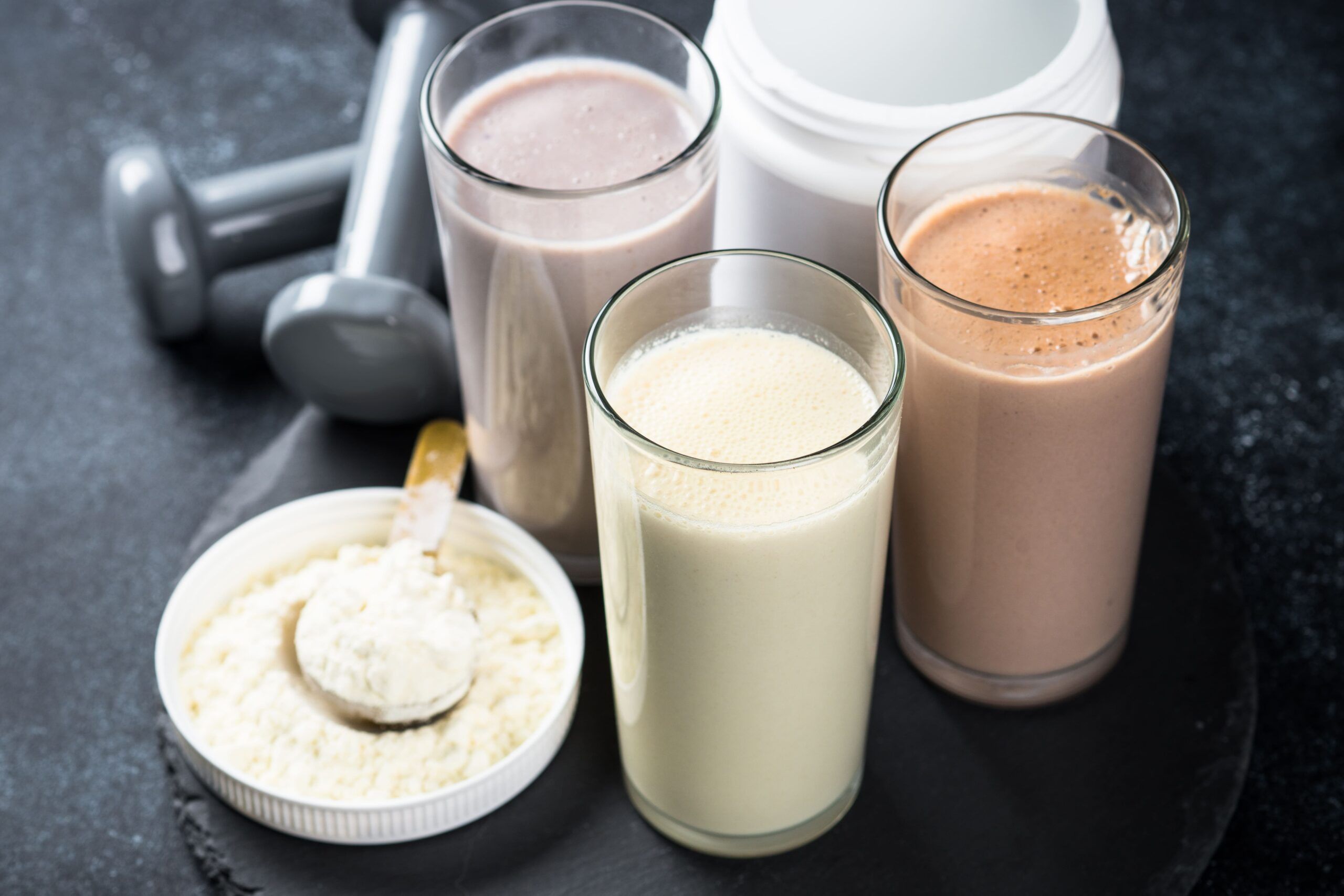The meal shake market is growing every year and offers a growing selection of products with different compositions, flavours and intended use. Apart from the popular gainers, there are also protein supplements and complete meal replacements. The consumer looking for an alternative to regular meals has a difficult choice – each product is advertised as the best and suitable for him. But what are the differences between them, and which is the most remarkable in terms of nutritional value and health benefits?
Summary
- SUPERSONIC Food (meal replacement) has balanced amounts of macronutrients and a complete set of essential vitamins and minerals. In addition to adequate amounts of fats, proteins and carbohydrates, it also contains fiber and is enriched with ingredients such as superfoods and plant extracts.
- Protein supplements are mainly composed of protein (75-90%) and very small amounts of carbohydrates and fats. They are created mainly for athletes and people who want to increase muscle mass.
- Gainers are products with a high content of carbohydrates (50-60%) and moderate content of protein (15-25%), with a very low content of fats, fibre, vitamins and minerals. They are designed for people who want to increase their body mass, not necessarily their muscle mass.
Meal replacement
Unlike protein supplements and gainers, SUPERSONIC Food doesn’t have a clear quantitative advantage of one or two macronutrients, it has a balanced composition with fats, carbohydrates and proteins in balanced proportions. In addition, it is a source of fiber, naturally occurring in raw materials such as oatmeal, flaxseed and inactive Yarrowia lipolytica yeast, as well as providing all necessary 26 vitamins and minerals.
SUPERSONIC Food’s formula is based on 4 types of plant proteins: pea, rice, pumpkin and hemp – this combination guarantees the product’s complete aminogram, providing all the endogenous and exogenous amino acids the body needs. Oatmeal is the main source of carbohydrates and fiber, which includes the beta-glucan fraction, which has the ability to lower LDL cholesterol and regulate insulin levels in the blood. The content of monosaccharides is low, one serving of the product provides only 3 g of them (i.e. 3% of the daily RI). The sources of fats in SUPERSONIC Food are liquid bioesters of omega 3-6-9 fatty acids, which come from flax and hemp, as well as linseed and chia seeds. Thanks to these ingredients, Food is rich in monounsaturated and polyunsaturated fats, while it is low in saturated fats, so its fatty acid profile is in line with EFSA recommendations (6).
In addition to the basic ingredients that provide the right proportions of proteins, carbohydrates and fats, SUPERSONIC Food has added other unique substances with health-promoting effects. It contains lycopene, which has strong antioxidant and anticancer effects (7), lutein and zeaxanthin, which support eye function (8), and choline, which is called vitamin B4 and is responsible for improving memory and brain function, among other things (9). In addition, as the only meal replacement, it contains liquid omega 3-6-9 fatty acids in the form of bioesters, so they are best absorbed by the body and can be best utilized by it. Due to the carefully selected composition, most of the minerals and vitamins present in SUPERSONIC Food occur naturally in the raw materials. Rosehip extract is a source of vitamin C, bladderwrack provides iodine, Yarrowia lipolytica yeast is a source of B vitamins, and zinc comes from oatmeal.
Protein supplements
Protein supplements are mainly targeted at athletes and people who are trying to reduce body weight or want to supplement their diet with protein (for example, vegans). They are characterized by a very high protein content, which is usually 70-90%, while having small amounts of fat (2-5%) and carbohydrates (2-15%). They usually provide a small amount of fiber (1-2%), and the content of vitamins and minerals is not declared on their packaging, so it can be assumed that it is trace. On the other hand, they often have listed contents of particular amino acids, especially essential ones, since it is mainly these that are of interest to athletes.
The nutrients can be based on 3 types of proteins: concentrates, isolates and hydrolysates. Concentrates are the cheapest, due to the lowest protein content (60-80%), while isolates have the highest protein content (over 90%). Hydrolysates are the most expensive, but also the best absorbed by the body, because the proteins contained in them have been broken down into smaller molecules through the action of enzymes.
Depending on the origin of the protein, nutritional supplements can be vegan – in which case they are based only on plant proteins such as those from peas and soya – or non-vegan, which are based on cow’s milk proteins.
Additional ingredients that are added to protein formulations to enhance their taste and make them more attractive to customers are flavors, colors. In most cases, flavors are synthetically produced due to the fact that they are cheaper and offer a wider range of flavors compared to natural flavors. However, they do not reflect the taste of the real product as well as natural flavors, which are extracted directly from the raw materials whose taste they possess (e.g. natural vanilla flavor – is extracted from vanilla beans, synthetic vanilla flavor – is obtained by a chemical process).
In addition to the ingredients listed above, protein supplements typically contain no other nutrients in their composition. Sometimes additives are added for technological purposes, such as emulsifiers like lecithin to improve the consistency of the finished shake.
Gainer
The term “gainer” refers to shakes designed to help increase body weight. They have a carbohydrate-protein profile, where carbohydrates are usually four times more than protein, while they are very low in fat (2-8%) and practically lacking in fiber (0-1%). Because of their composition, they typically do not contain significant amounts of vitamins and minerals and are not fortified with them, and their amounts are not listed in the nutrition table. On their labels, however, they have a detailed amino acid profile, including endogenous and exogenous amino acids.
Gainer formulas are based on two main ingredients: one is a source of carbohydrates and the other is a source of protein. The most commonly used proteins are whey proteins derived from cow’s milk (usually in the form of isolates or concentrates), and in the case of vegan products, plant proteins are used, most often from peas and rice. Carbohydrate sources in gainers are ground oatmeal, starches, dextrins or maltodextrin. While oatmeal is a healthy and beneficial component of a balanced diet, because it provides complex carbohydrates and fiber, raw materials such as starch or dextrins are sources of only quickly assimilated carbohydrates, which have a high glycemic index, which quickly provides a boost of energy, but does not satiate for long. This can be an advantage when the body needs easily accessible carbohydrates before a workout, but the higher the glycemic index of a product, the less often it should be consumed, because it can negatively affect the body’s carbohydrate balance, leading to diseases such as insulin resistance or diabetes (the glycemic index of maltodextrin is even higher than that of white sugar) (2).
Gainers are enriched with dyes, the vast majority of which are synthetic dyes that have harmful effects on human health, which has been confirmed by scientific research, e.g. the popularly used cochineal red may contribute to hyperactivity, cancer, asthma and allergies (5). Apart from and colors, gainers are also enriched with flavours which are supposed to make their taste more attractive and varied, as well as auxiliary substances, such as emulsifiers which improve texture or enzymes (e.g. derived from papaya), whose purpose is to facilitate digestion of large amounts of protein contained in the product.
Conclusions
The primary difference between gainers, protein supplements and SUPERSONIC Food, which is a meal replacement, is the macronutrient distribution. Products in these categories should not be confused with each other because their nutritional values and compositions are vastly different. Gainers provide very large amounts of carbohydrates and medium amounts of protein, protein supplements consist practically only of protein and only meal replacements provide both protein, carbohydrates and fats, as well as fiber. Each product has a different purpose, hence the differences in their composition, but when choosing a shake for yourself it is worth paying attention not only to the content of individual macronutrients, but also the raw materials from which the product is made. They are the main determinants of the influence of the product on our body, both in the short term (the influence of the glycemic index of the products on our mood) and in the long term (the influence of the intake of saturated fatty acids and sugars on the lipid and carbohydrate metabolism of the body). Therefore, it is worth choosing products, which – like SUPERSONIC Food – are characterized by a clean label and clear composition, do not contain artificial fillers, additives and sweeteners, and are based on natural raw materials, whose pro-health effect on the body is proven by research.
References:
- https://www.medicalnewstoday.com/articles/322426#is-maltodextrin-safe Data dostępu: 14.04.2021
- https://polish.mercola.com/sites/articles/archive/2019/04/24/dzialania-niepozadane-sukralozy.aspx Data dostępu: 14.04.2021
- neurometabolic functions in C57BL/6J mice. PLoS One, 8(8), e70257.
- Krępska, M., Lasoń-Rydel, M., & Jagiełło, J. Barwniki spożywcze i ich wpływ na organizm człowieka The impact of food dyes on human health.
- EFSA Panel on Dietetic Products, Nutrition, and Allergies (NDA). (2010). Scientific Opinion on Dietary Reference Values for fats, including saturated fatty acids, polyunsaturated fatty acids, monounsaturated fatty acids, trans fatty acids, and cholesterol. EFSA Journal, 8(3), 1461.
- Rao, A. V., & Agarwal, S. (2000). Role of antioxidant lycopene in cancer and heart disease. Journal of the American College of Nutrition, 19(5), 563-569.
- Ribaya-Mercado, J. D., & Blumberg, J. B. (2004). Lutein and zeaxanthin and their potential roles in disease prevention. Journal of the American College of Nutrition, 23(sup6), 567S-587S.
- Zeisel, S. H. (2000). Choline: an essential nutrient for humans. Nutrition.











